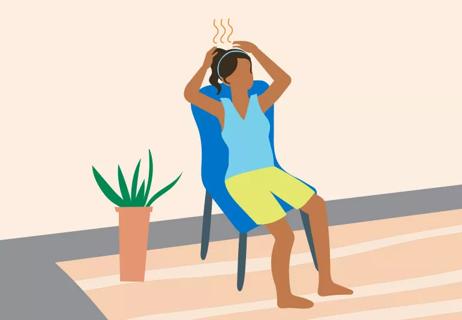A Kegel routine will get your pelvic floor muscles in top shape

You do bicep curls to keep your guns pumped and crunches to keep your core strong. But there’s another muscle group that doesn’t get mentioned at the gym: the pelvic floor.
Cleveland Clinic is a non-profit academic medical center. Advertising on our site helps support our mission. We do not endorse non-Cleveland Clinic products or services. Policy
Should you exercise your pelvic floor muscles regularly? Amy Park, MD, a gynecologist who specializes in pelvic floor disorders, explains what happens when this muscle group gets weak — and how to start an exercise regimen to keep it in shape.
The pelvic floor is a sheet of muscles in your pelvis, the lower part of your torso between your abdomen and legs. It forms a kind of hammock to support the bladder, bowel, uterus and other pelvic organs.
When your pelvic floor is weak or injured, the function of the pelvic floor muscles can be affected. That can cause bladder problems, including leaking urine and overactive bladder. But if pelvic floor muscles are too tight, it can lead to muscle spasms and pelvic pain. Trauma or surgery can cause overly tight pelvic floor muscles.
Whether your pelvic floor muscles are weak or painfully tight, pelvic floor exercises can help.
Pelvic floor problems tend to be more common in women, especially after childbirth or menopause. However, men can also experience them. So anyone can benefit from a pelvic floor exercise routine.
The go-to move is known as a Kegel exercise. It’s not especially difficult — once you’ve identified the right muscles to squeeze. To start, pretend you have to pee. Now squeeze the muscles you’d use to hold it. Those muscles are your pelvic floor.
“There are a lot of different regimens for Kegels,” Dr. Park says. For a basic starter routine, try these steps:
There’s another trick to use if you have stress incontinence, which causes urine to leak during activities like coughing, sneezing or lifting things. “Some people with stress incontinence benefit from an exercise called ‘the knack,’” Dr. Park says.
The knack is just a quick, strong Kegel done right before the activity that causes you to leak. Tickle in your nose? Try squeezing before you sneeze.
After pregnancy and childbirth, lots of women discover their pelvic floor just isn’t what it used to be. Can you do anything to prevent it from getting weak?
Unfortunately, maybe not, Dr. Park says. Studies have found that doing pelvic floor exercises during pregnancy doesn’t prevent pelvic floor dysfunction from developing. “But if you already have a problem with stress incontinence, pelvic floor exercises during or after pregnancy will help,” she says.
Kegels are safe to do at home, but many people benefit from working with a physical therapist trained in pelvic floor dysfunction. “Learning the appropriate technique is important, and it’s helpful to have a trained professional guide you through it,” Dr. Park says.
Seeing a physical therapist who specializes in pelvic floor problems is especially important if you experience pelvic pain. “Underlying back and hip pain can contribute to pelvic pain. A specialist can make sure you’re addressing all of the issues,” she says. “For pelvic pain, physical therapy is really a mainstay of treatment.”
Physical therapists sometimes use extra tools to help you target the right muscles. These can include:
Whatever method you choose, working out your pelvic floor is the best way to keep it in tiptop shape.
Learn more about our editorial process.

Working your pelvic floor muscles can help you prevent and recover from urinary incontinence

Vaginal pain can be caused by infections, cysts or other conditions

Here’s the truth about these egg-shaped crystals, straight from the experts

Heat starts in your chest and moves up to your neck and face … and then, the sweating begins

While they may not burn calories or cause fevers, these heat waves can make you miserable — but you don’t have to just grin and bear it!

Taking precautions like eating healthy, stopping smoking and getting regular screenings can help protect against breast cancer

It’s a natural part of aging, starting with perimenopause and eventually leading into postmenopause

From medications and stress to PCOS and STIs, there’s a wide range of reasons Aunt Flo may overstay her welcome

Your metabolism may torch 1,300 to 2,000 calories daily with no activity

A gentle touch in all the right places may help drain your sinuses